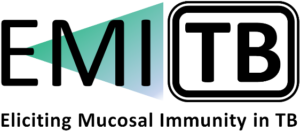Reference: H2020-PHC-2014-single-stage_RTD (643558)
Funding Entity: European Commission
Coordinator: Rajko Reljik (St George´s University of London)
Principal Investigator: Dr. África González-Fernández (WP3 Leader)
Duration: 01/01/2015 – 30/06/2019
Working group:
Dr. Luis Anibarro García
Dr. Ana Igea Fernández
Olivia Estévez Martínez
Amparo Martínez Pérez
Dr. María Elina Garet Fernández (Former member)
Dr. Silvia Lorenzo (Former member)
Andrea Hernández Fernández (Former member)
José Antonio Trillo Franco (Former member)
Tuberculosis (TB) is a global health problem, killing 1.5 million of people every year. The only currently available vaccine, Mycobacterium bovis BCG, is effective against severe childhood forms, but it demonstrates a variable efficacy against the pulmonary form of TB in adults. Many of these adult TB cases result from the reactivation of an initially controlled, latent Mycobacterium tuberculosis (MTB) infection. Effective prophylactic vaccination remains the key long-term strategy for combating TB.
The Immunology Group participates in the EMI_TB project as the leader of Work Package 3 (WP3) “Mechanisms and correlates of protective immunity in animals and humans”.
As part of the WP3 we are working in collaboration with the Hospital Provincial of Pontevedra, Spain and the Instituto Nacional de Saúde (INS) of Maputo, Mozambique, to recruit a cohort of pulmonary TB (tuberculosis) patients and their contacts. This study is focused on the search of new markers of the disease and/or protection to the infection using different techniques such as transcriptomics, proteomics and characterization of cell populations by flow cytometry.
This WP is also involved in the identification of correlates of protection in mice vaccinated with new prototypes of vaccine against the TB infection. Here the main objective is the identification of the metabolic pathways and cell populations involved in the protective response generated by the vaccines in the animal model by cell cytometry and transcriptomic analysis among others.
To learn more:
Associated research lines: Tuberculosis, Vaccines.







